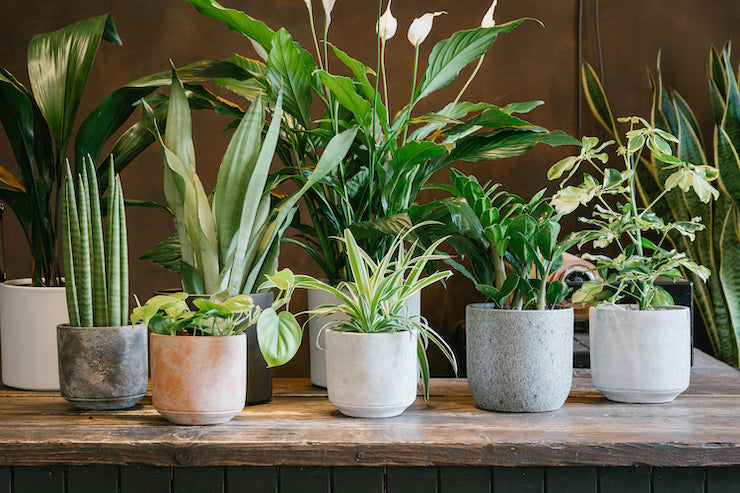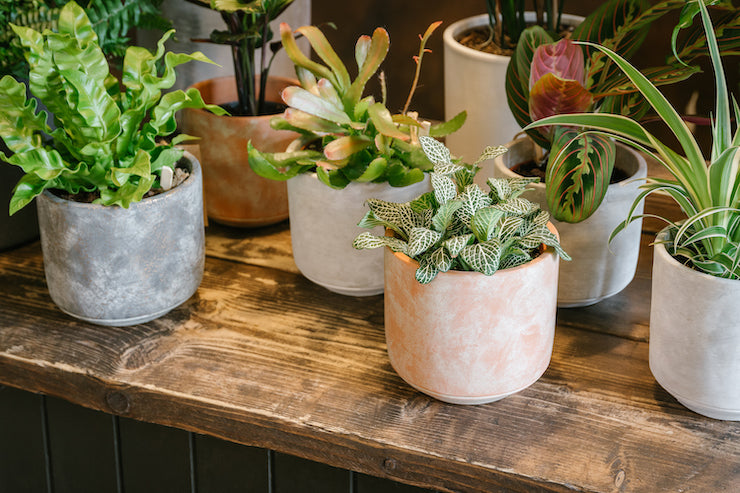
Dieffenbachia Care Guide: How to Keep Your Dumb Cane Thriving Indoors
There are around 50 species in the Dieffenbachia genus, which belongs to the Araceae family. These striking houseplants are loved for their large, splayed leaves and bold, often variegated patterns in shades of green, yellow, and white. Native to the tropical regions of Central and South America, Dieffenbachia can grow up to 10ft tall in the wild.
Popular varieties include Dieffenbachia ‘Reeva’ and Dieffenbachia ‘Reflector’, while more unusual types such as Dieffenbachia ‘Banana’ (with its eye-catching white patterning) and Dieffenbachia ‘Living Fantasy’ (with unique, speckled foliage) are well worth seeking out.
These plants are commonly known as ‘Dumb Cane’. If ingested, Dieffenbachia can cause swelling and irritation of the mouth and throat, which may temporarily affect speech—hence the nickname. While not severely toxic, it’s best to keep them out of reach of pets and small children.
Dieffenbachia Care Tips
Dieffenbachia naturally thrive in warm, humid rainforests, growing beneath the tree canopy. In the home, aim to recreate these conditions by placing your plant in bright, indirect light. Avoid direct sunlight, particularly in south-facing windows, as this can scorch the leaves.
Let the top inch or two of compost dry out before watering. You can check by sticking your finger into the soil—if it’s still damp, wait a few more days. A lighter pot can also indicate the soil has dried out. When watering, always remove your plant from its decorative pot, place it over a sink or bath, and water thoroughly until excess drains out. Never let the plant sit in standing water, as this leads to root rot.
Dieffenbachia are humidity-loving houseplants, so mist their leaves with water a few times a week—ideally in the morning or during the day. Avoid misting in the evening, as water lingering on the leaves overnight can lower the plant’s temperature. Keep the plant away from cold, draughty areas.
Feeding and Repotting Dieffenbachia
During spring and summer (the growing season), feed once a month using a general houseplant fertiliser. We recommend Liquid Gold Leaf, a premium option for promoting lush new growth. This is also the perfect time to check if your plant needs repotting.
If you notice roots pushing through the drainage holes or circling densely at the base, it’s time to size up. Choose a pot with drainage, no more than 5cm wider than the current one. Dieffenbachia prefer a well-draining mix—ideally 60% Soil.Ninja Base Mix, 20% bark, and 20% sand. Alternatively, if you’re working with standard houseplant compost, we recommend 80% Houseplant Focus mixed with 20% perlite.
To repot:
-
Add a layer of fresh compost to the base of the new pot.
-
Gently remove your plant from the old pot and loosen the root ball.
-
Place the plant (with its existing compost) into the new pot and fill in the gaps with fresh mix.
Troubleshooting Common Dieffenbachia Problems
Yellowing Leaves
This is often caused by overwatering. Always check the compost before watering, rather than sticking to a fixed weekly schedule. In warmer months, compost may dry out within a week, but in winter it could take 2–3 weeks.
Yellow leaves can also be due to cold or draughty conditions. Move the plant away from windows, doors, or fireplaces if needed.
Leaf Drop
Typically a sign of underwatering. Check the soil more frequently and ensure the plant is watered thoroughly each time the top inch of compost dries out. Cold temperatures or draughts may also cause leaf drop.
Brown, Crispy Leaves
Crispy tips are a sign of low humidity. Mist regularly to keep leaves hydrated. Brown patches on leaves usually indicate sun scorch from too much direct light. Move your plant at least one metre away from strong sunlight to prevent this.
Final Thoughts
Dieffenbachia are rewarding houseplants that add bold foliage and tropical charm to your space. With the right care—bright indirect light, regular misting, well-draining soil, and proper watering. Your Dumb Cane will thrive and become a stunning focal point in any indoor garden.



